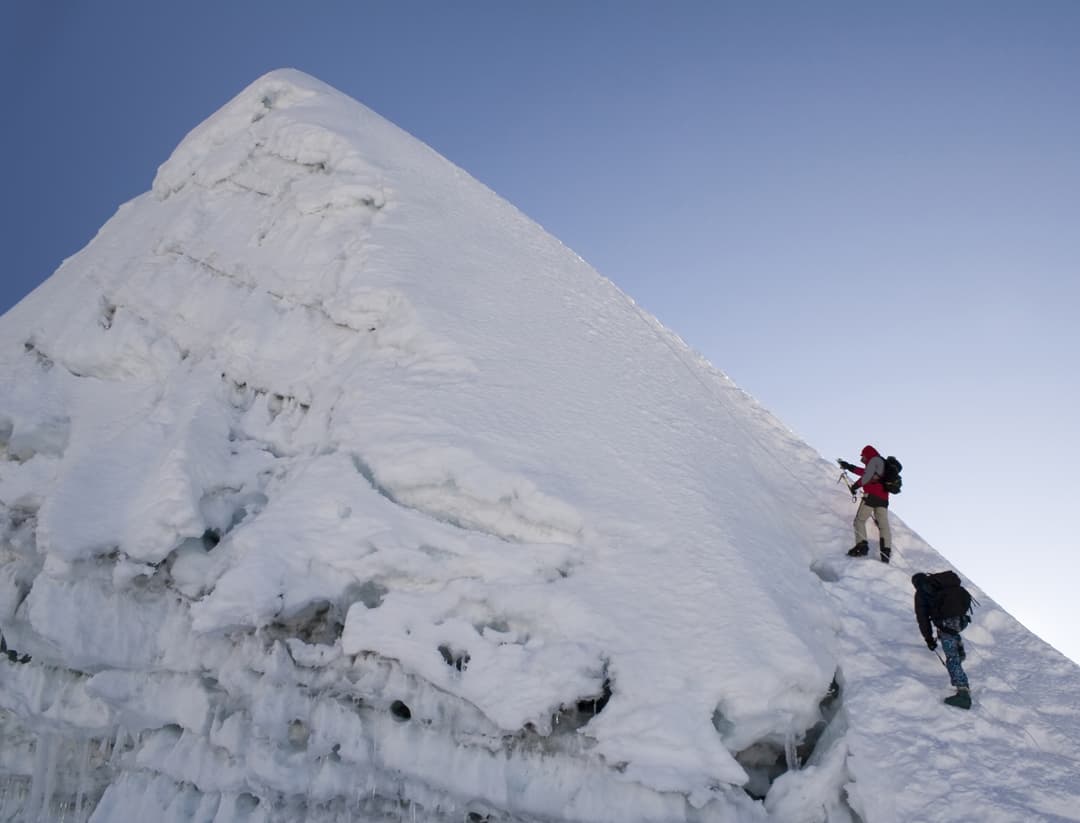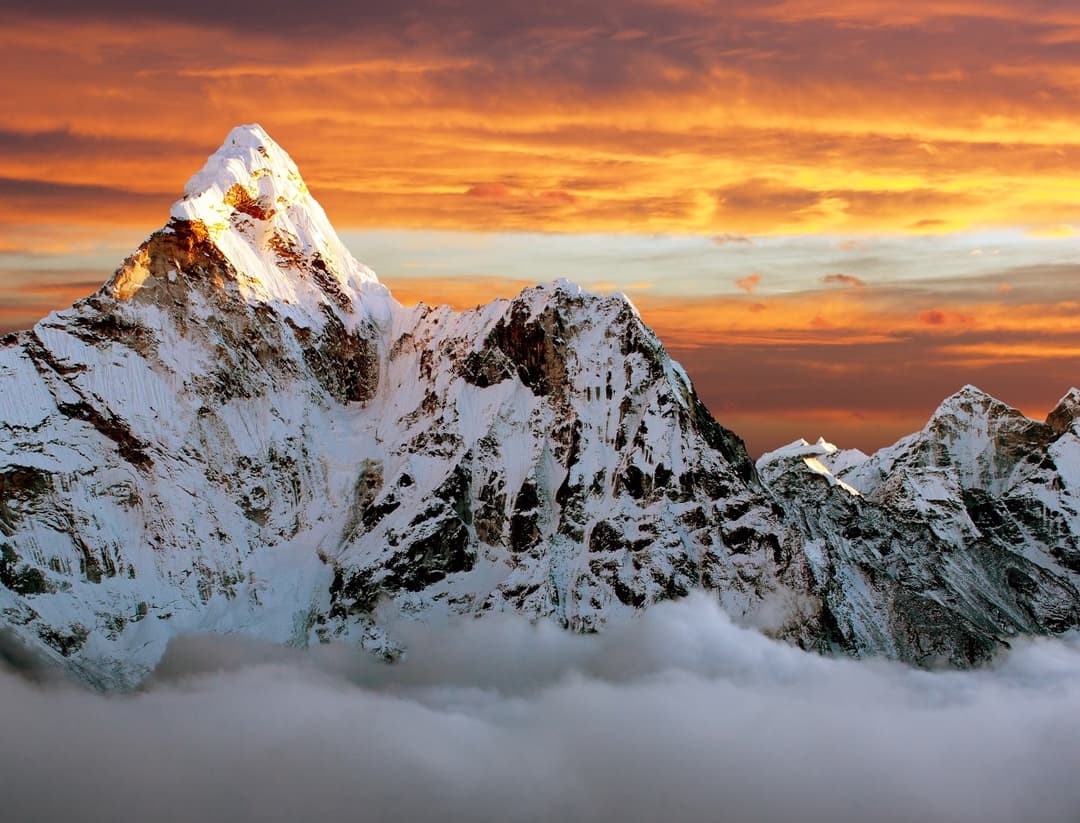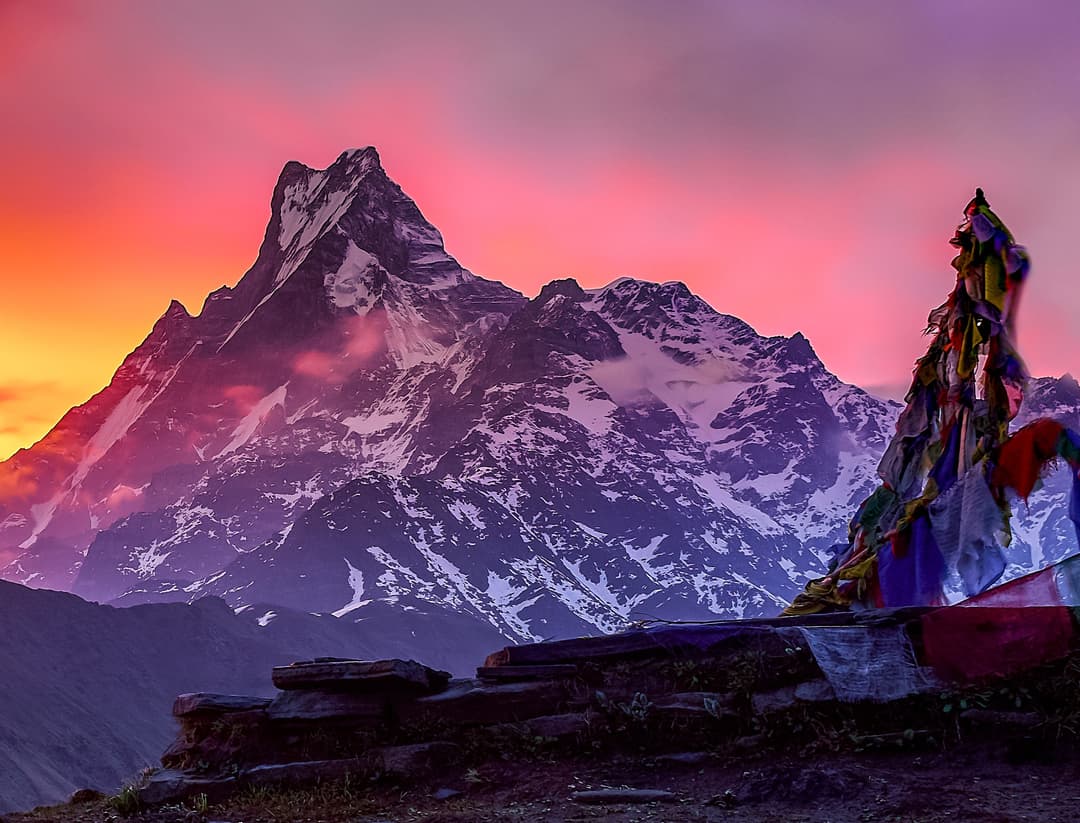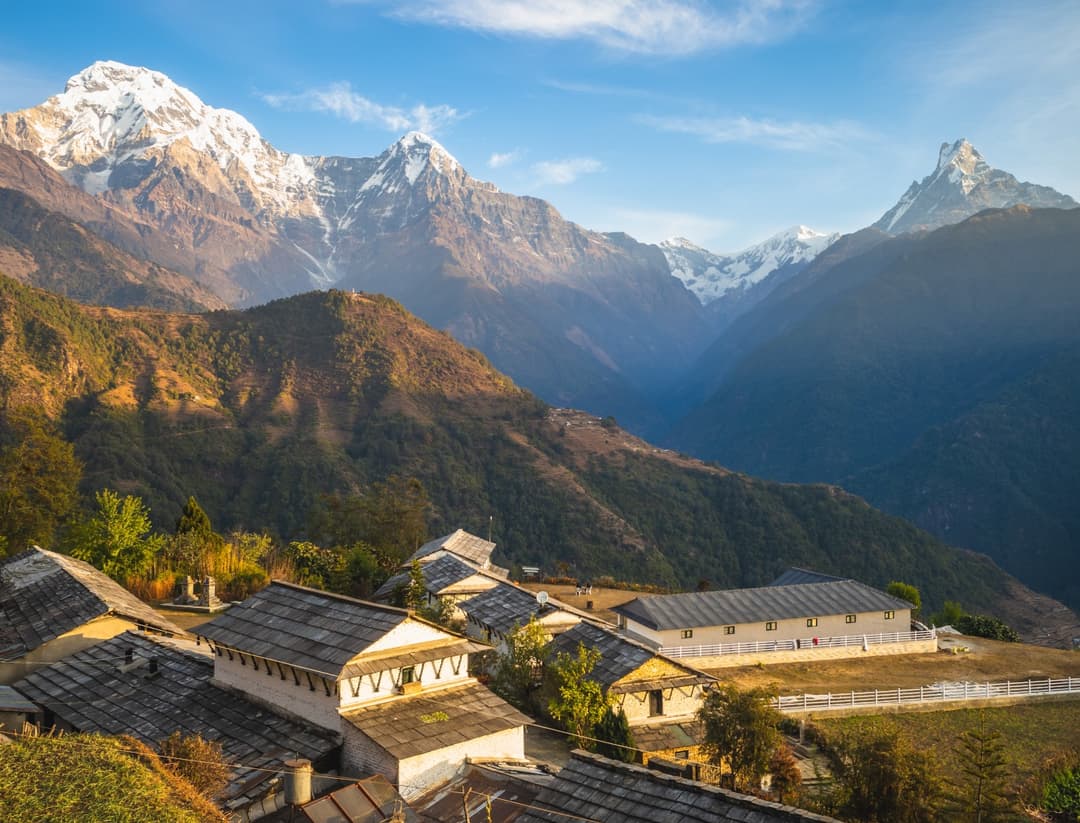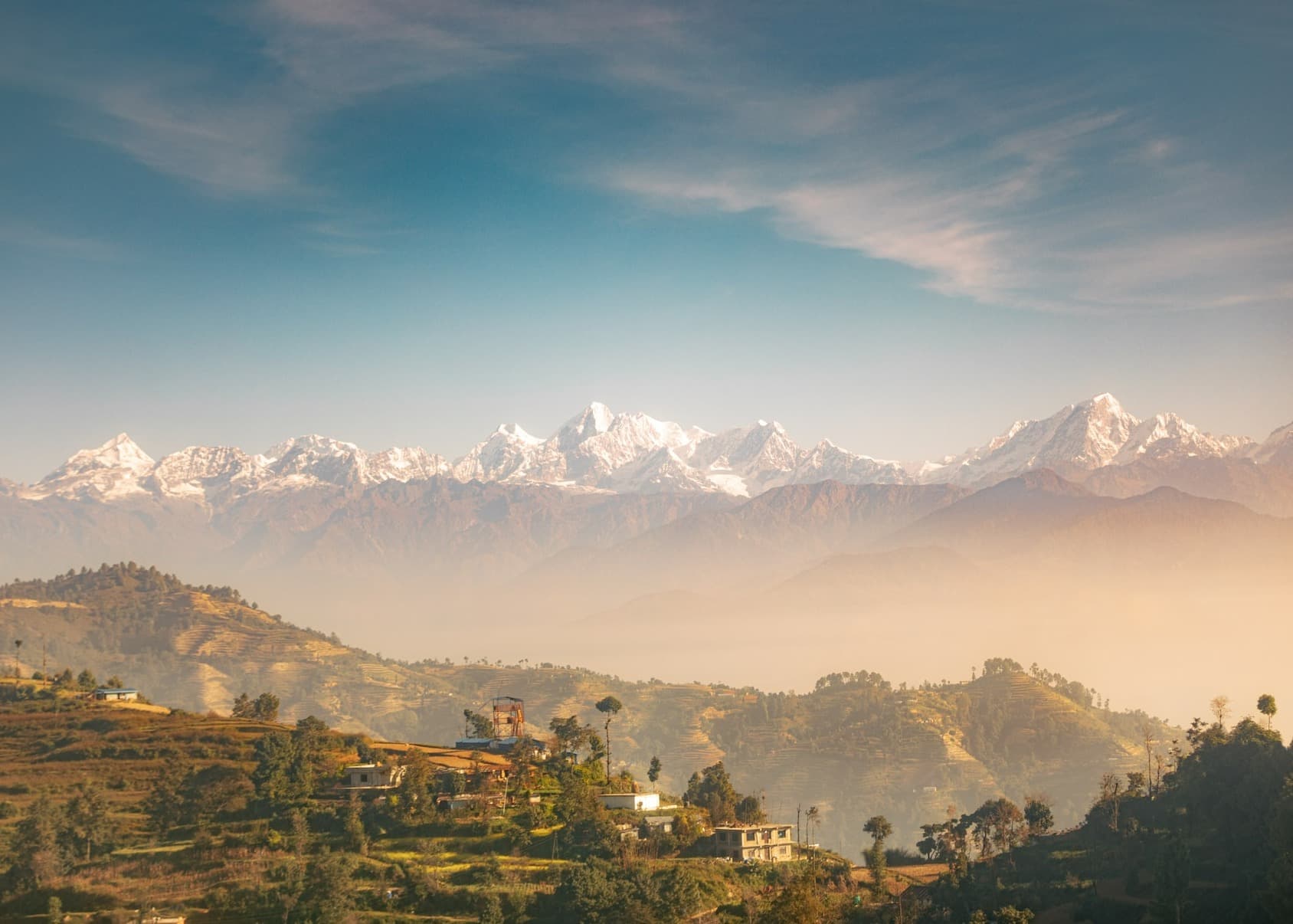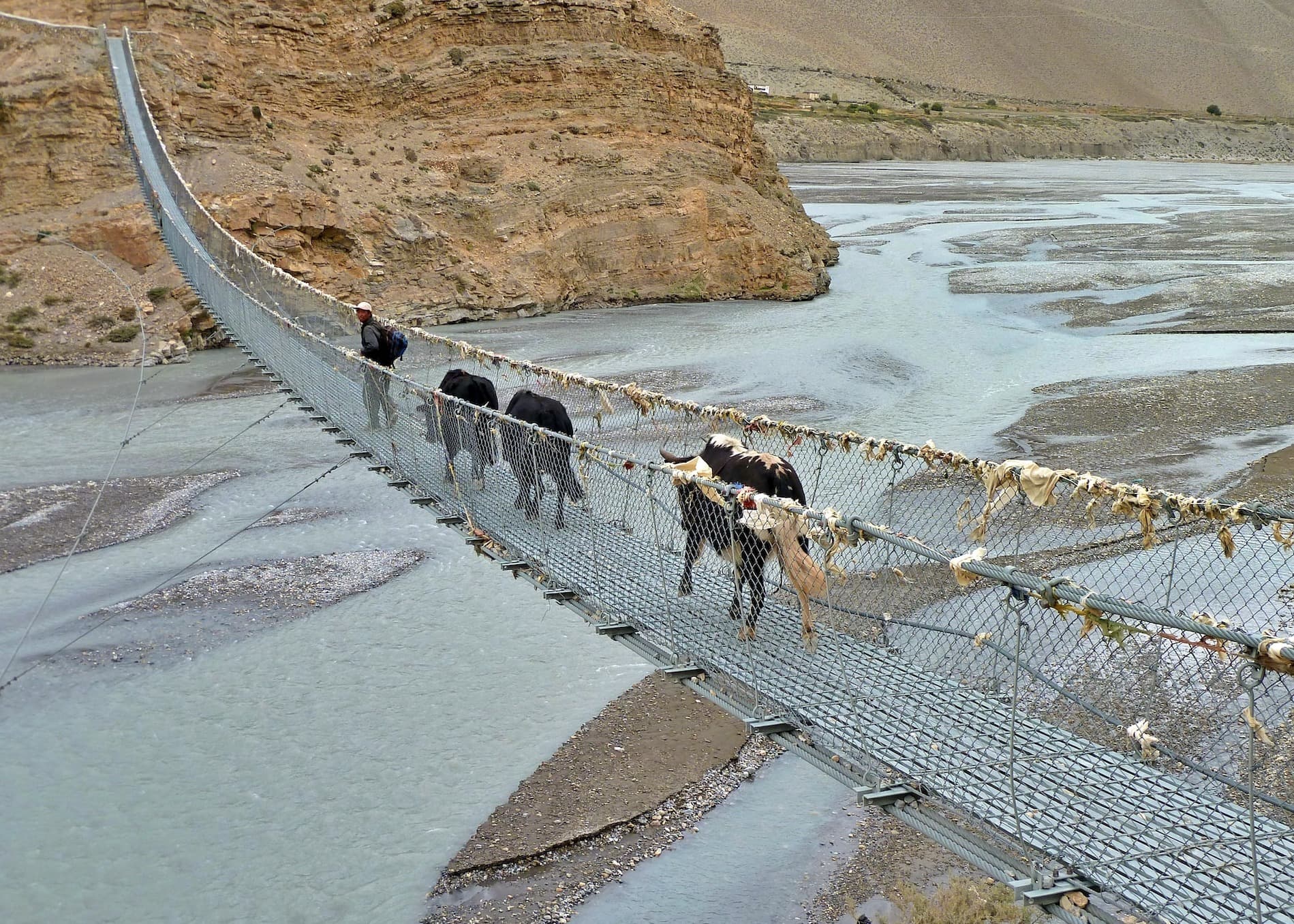- The Beauty and Majesty of Mt. Ama Dablam
- Cost for Ama Dablam Expedition
- Prepration for the Ama Dablam Expedition
- Best time to undertake the Mt. Ama Dablam Expedition
- How challenging is the Mt. Ama Dablam Expedition compared to other peaks in the Everest region?
- Success Rate of Ama Dablam Expedition
- Itinerary of Ama Dablam Expedition
- Is there an age restriction for Ama dablam expedition?
- Can Beginner Climb Ama Dablam?
- How long does it take to complete Ama Dablam Expedition?
Welcome to the world of adventure and mountaineering! In this thrilling article, we will embark on an exhilarating journey to the magnificent Mt. Ama Dablam. Situated in the heart of the Himalayas, this iconic peak offers a challenging and awe-inspiring expedition for mountaineers from around the globe.
Mt. Ama Dablam Expedition is a daring mountaineering venture that involves scaling the breathtaking heights of Mt. Ama Dablam, one of the most prominent peaks in the Everest region. Rising to an impressive height of 6,812 meters (22,349 feet), this majestic mountain presents climbers with a formidable challenge, combining technical rock climbing and steep snow and ice slopes. The expedition demands exceptional physical fitness, technical skills, and a passion for adventure.
The Beauty and Majesty of Mt. Ama Dablam
As you ascend the slopes of Mt. Ama Dablam, you will be rewarded with unparalleled views of the surrounding Himalayan peaks, including the mighty Everest, Lhotse, and Makalu. The mountain's name, which translates to "Mother's Necklace," is derived from its elegant shape, resembling a mother's outstretched arms cradling a precious jewel. Its symmetrical ridges, vertical walls, and glaciated slopes make it a true marvel of nature and a sight to behold for both climbers and onlookers.
Cost for Ama Dablam Expedition
The cost for an Ama Dablam Expedition varies depending on the number of people in the group. Here is the breakdown of the costs:
- For 1 person: US$ 9500
- For a group of 2-4 people: US$ 9000 per person
- For a group of 5-8 people: US$ 8500 per person
- For a group of 9-15 people: US$ 8000 per person
Please note that these prices are given in US dollars and are subject to change.
Prepration for the Ama Dablam Expedition
Physical Conditioning: A Prerequisite for Success
To undertake the Mt. Ama Dablam Expedition, it is crucial to be in excellent physical condition. The climb demands a high level of endurance, strength, and agility. Engaging in regular cardiovascular exercises, strength training, and endurance activities like hiking, running, and cycling will help prepare your body for the physical demands of the expedition. Additionally, practicing yoga or Pilates can improve flexibility and core strength, which are vital for navigating challenging terrain.
Acclimatization: Adjusting to High Altitude
One of the biggest challenges faced during the Mt. Ama Dablam Expedition is acclimatizing to the high altitude. As you ascend, the oxygen levels decrease, and the body needs time to adapt to the thin air. Acclimatization treks are an integral part of the preparation process.
These treks involve gradually ascending to higher altitudes and then descending to lower altitudes for rest, allowing the body to adjust and build tolerance to the reduced oxygen levels. Proper acclimatization significantly reduces the risk of altitude-related illnesses.
Technical Skills: Navigating the Mountain's Challenges
Successfully scaling Mt. Ama Dablam requires proficiency in various mountaineering techniques. Climbers must be adept at rock climbing, ice climbing, and using specialized equipment such as crampons, ice axes, and harnesses.
Prior experience in high-altitude climbing and knowledge of rope techniques, glacier travel, and crevasse rescue are essential. It is recommended to undergo training with experienced mountaineering guides or enroll in courses that provide the necessary technical skills for the expedition.
Best time to undertake the Mt. Ama Dablam Expedition
The best time to attempt the Mt. Ama Dablam Expedition is during the pre-monsoon season (April-May) and the post-monsoon season (September-October). These periods offer stable weather conditions, with clear skies and relatively less precipitation.
How challenging is the Mt. Ama Dablam Expedition compared to other peaks in the Everest region?
The Mt. Ama Dablam Expedition is considered technically demanding and falls under the category of "alpine style" climbing. It requires climbers to navigate challenging rock sections, traverse steep snow slopes, and overcome vertical ice walls. The expedition is often regarded as more technically challenging than the standard routes on Everest region and other nearby peaks.
Success Rate of Ama Dablam Expedition
The success rate of the Mt. Ama Dablam Expedition varies from season to season and depends on several factors such as weather conditions, team experience, and individual fitness levels. On average, the success rate ranges from 60% to 70%. With the help of our experienced guides make it more possible to summit ama dablam.
However, it is important to note that success should not be solely measured by reaching the summit but also by ensuring the safety and well-being of the climbers.
Itinerary of Ama Dablam Expedition
- Arrival at Kathmandu (1,320m/4,330ft): Your expedition begins with your arrival in Kathmandu, the capital city of Nepal.
- Climbing preparation and Kathmandu Sightseeing: This day is dedicated to finalizing the necessary climbing preparations, including obtaining permits and equipment checks. You may also have the opportunity to explore the cultural and historical sites of Kathmandu.
- Fly to Lukla from Kathmandu, Trek to Phakding (2,610m/8,562ft): After a scenic flight from Kathmandu to Lukla, you will start your trek to Phakding, a small village situated at an altitude of 2,610 meters.
- Trek from Phakding to Namche Bazaar (3,443m/11,299ft): The trail takes you through beautiful forests and crosses suspension bridges as you ascend to Namche Bazaar, a vibrant Sherpa town and a popular acclimatization spot.
- Acclimatization at Namche Bazaar (3,443m/11,299ft): This day is dedicated to acclimatizing to the increasing altitude. You can explore the local area and hike to higher elevations for better acclimatization.
- Trek from Namche Bazaar to Debuche (4,240m/13,911ft): The trail continues through picturesque landscapes and rhododendron forests as you make your way to Debuche.
- Trek from Debuche to Pheriche (4,240m/13,910ft): You will trek to Pheriche, a small village located in the Imja Valley, surrounded by stunning mountain views.
- Acclimatization: Another day for acclimatization to help your body adjust to the high altitude. You may take short hikes and rest to prepare for the ascent.
- Trek from Pheriche to Ama Dablam Base Camp (4,570m/14,993ft): The trail leads you to Ama Dablam Base Camp, your starting point for the climb. The base camp offers breathtaking views of the mountain.
- Acclimatization and Pre-climb Training at Ama Dablam Base Camp: This day is dedicated to further acclimatization and pre-climb training, where you will receive instructions on climbing techniques and safety procedures.
- 11-25. Ascending and Descending of Ama Dablam (6,814m/22,355ft): These days are devoted to the ascent and descent of Ama Dablam. You will navigate through challenging sections, including technical terrain, using fixed ropes and climbing equipment.
- Trek from Amadablam Base Camp to Namche Bazaar (3,443m/11,299ft): After the climb, you will retrace your steps and trek back to Namche Bazaar.
- Trek from Namche Bazaar to Lukla (2,850m/9,350ft): The trail descends further as you make your way back to Lukla, where you began the trek.
- Fly from Lukla to Kathmandu (1,320m/4,330ft): You will take a scenic flight from Lukla back to Kathmandu.
- Leisure Day in Kathmandu | Farewell Dinner: This day is for relaxation and exploring Kathmandu at your own pace. In the evening, a farewell dinner will be organized to celebrate the successful expedition.
- Final Departure: Your Ama Dablam Expedition concludes with your departure from Kathmandu.
Is there an age restriction for Ama dablam expedition?
Yes, there is an age restriction for the Ama Dablam Expedition. Typically, climbers must be at least 16 years old to participate in the expedition. This requirement is in place due to the physically demanding nature of the climb and the high-altitude challenges involved.
Additionally, it is essential for climbers to have a good level of physical fitness, previous trekking or climbing experience, and the ability to cope with the rigors of high-altitude climbing.
Can Beginner Climb Ama Dablam?
Climbing Ama Dablam is not typically recommended for beginners. It is considered a technically challenging mountain and requires prior climbing experience, especially in high-altitude and technical terrain. The ascent involves steep sections, exposed ridges, and technical climbing skills such as using fixed ropes, traversing icy slopes, and using crampons.
To climb Ama Dablam, climbers should have a solid foundation of mountaineering skills, experience in using climbing equipment, and the ability to handle the physical and mental demands of high-altitude climbing. It is advisable to have previous experience climbing peaks in the Himalayas or other similar challenging mountains before attempting Ama Dablam.
How long does it take to complete Ama Dablam Expedition?
The duration of the Ama Dablam Expedition can vary depending on several factors, including the itinerary, weather conditions, acclimatization needs, and the climbers' abilities. On average, the expedition takes approximately 30 days from arrival in Kathmandu to the final departure.
The trekking portion of the expedition usually takes around 14-16 days, which includes the trek from Lukla to Ama Dablam Base Camp and the return journey. This allows for acclimatization stops in Namche Bazaar, Pheriche, and at the base camp itself. These stops are crucial for adjusting to the high altitude and reducing the risk of altitude sickness.
Once at the Ama Dablam Base Camp, climbers typically spend a few days for pre-climb training and acclimatization. The actual ascent and descent of Ama Dablam itself can take anywhere from 10 to 15 days, depending on the weather conditions and the climbers' progress. So in total it can take upto 30 days to complete the summit of Ama Dablam,
After successfully summiting Ama Dablam, the return journey back to Kathmandu involves trekking back to Lukla and taking a flight from Lukla to Kathmandu.
In Conclusion, Mt. Ama Dablam Expedition offers an extraordinary opportunity to test your limits, experience the grandeur of the Himalayas, and forge unforgettable memories. Conquering this iconic peak requires physical prowess, technical skills, and mental resilience. It is a testament to the human spirit and a celebration of the indomitable will to explore and conquer the unknown. So, gear up, prepare diligently, and embark on the adventure of a lifetime as you set foot on the majestic Mt. Ama Dablam.



